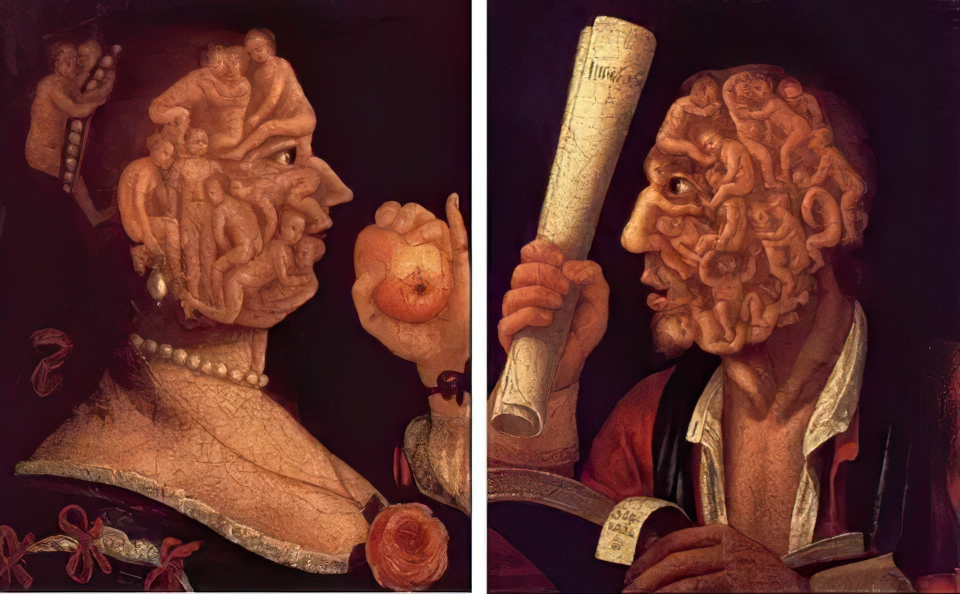Welcome to an article that takes you on a fascinating journey through the inner workings of our bodies. Today, we delve into the very essence of life itself – blood. You may already know that blood runs through our veins, keeping us alive and well, but did you know that there are many enthralling aspects to this crimson fluid? Prepare to be amazed as we explore some intriguing facts about blood that will leave you with a newfound appreciation for this vital component of our existence. So, sit back, relax, and let’s begin our adventure into the captivating world of blood!
- Table of Contents
- Components of Blood: Understanding the Lifesaving Fluid
- The Rich History of Blood Transfusions: From Ancient Times to Modern Medicine
- The Not-So-Red Blood: Unveiling the Rainbow of Blood Types
- Blood, the Ultimate Problem Solver: Surprising Ways Blood Helps Maintain our Health
- Key Takeaways
Table of Contents
- Components of Blood: Understanding the Lifesaving Fluid
- The Rich History of Blood Transfusions: From Ancient Times to Modern Medicine
- The Not-So-Red Blood: Unveiling the Rainbow of Blood Types
- Blood, the Ultimate Problem Solver: Surprising Ways Blood Helps Maintain our Health
- Q&A
- Wrapping Up

Components of Blood: Understanding the Lifesaving Fluid
When it comes to understanding the human body, one cannot overlook the incredible complexity and importance of blood. Often referred to as the “lifesaving fluid,” blood is a vital component of our circulatory system that keeps us healthy and functioning. Let’s dive into the fascinating world of blood and explore its remarkable components:
- Red Blood Cells (RBCs): These tiny, disc-shaped cells are responsible for carrying oxygen from the lungs to every part of our body. Packed with a protein called hemoglobin, RBCs give blood its distinctive red color. An astounding fact is that the human body contains around 25 trillion RBCs circulating within it, providing oxygen to all our cells and tissues.
- White Blood Cells (WBCs): Known as the “body’s defense force,” WBCs play a crucial role in our immune system. These powerful cells fight off infections, viruses, and bacteria, safeguarding our health. There are different types of WBCs, each with unique functions, such as neutrophils that engulf and destroy pathogens, and lymphocytes that produce antibodies to identify and neutralize harmful substances.
- Platelets: These small, disc-shaped cells are essential for blood clotting and preventing excessive bleeding. Whenever we get a cut or injured, platelets rush to the site and form a plug by sticking to the damaged blood vessels. This clotting process helps the blood cells and proteins in plasma work together to heal the wound efficiently.
Understanding the components of blood gives us a newfound appreciation for its life-sustaining properties. Each element plays a crucial role, working harmoniously to maintain our well-being. So, next time you marvel at the complexity of our bodies, remember to acknowledge the extraordinary significance of this remarkable fluid called blood!

The Rich History of Blood Transfusions: From Ancient Times to Modern Medicine
The history of blood transfusions spans across centuries, showcasing the remarkable progress in the field of medicine. Ancient civilizations such as the Egyptians and Romans were aware of the importance of blood in sustaining life, although their understanding was limited. The concept of blood transfusions began to take shape in the early 17th century, thanks to the groundbreaking work of British physician William Harvey.
Harvey’s discovery of the circulation of blood in the human body laid the foundation for future advancements in transfusion medicine. The first recorded successful blood transfusion took place in the late 17th century, when Jean-Baptiste Denys, a French physician, successfully transfused the blood of a sheep into a young boy. However, these early attempts were met with various complications and limitations due to the lack of knowledge about blood types and compatibility.
- It wasn’t until the 20th century that blood transfusions became a routine and life-saving procedure. The development of blood typing and cross-matching techniques paved the way for safe and effective transfusions.
- In the 1900s, the discovery of ABO blood groups by Austrian immunologist Karl Landsteiner revolutionized the field. This finding allowed for the categorization of blood into four main types: A, B, AB, and O, thereby reducing the risk of adverse reactions during transfusions.
- Another significant breakthrough occurred in the 1940s with the discovery of the Rh factor, a protein found on the surface of red blood cells. This finding led to the classification of blood as either Rh positive or Rh negative, further enhancing transfusion safety.
Today, blood transfusions have become a vital component of modern medicine, saving countless lives every day. Improved understanding of blood types, compatibility, and the refinement of storage and preservation techniques have made transfusions safer and more successful than ever before. The rich history of blood transfusions serves as a testament to the tireless efforts of scientists and medical professionals who have continuously strived to improve and enhance this life-saving procedure.

The Not-So-Red Blood: Unveiling the Rainbow of Blood Types
Welcome to the captivating world of blood types! Beyond the classic red hue, did you know that blood actually comes in a mesmerizing rainbow of types? These distinct blood types, determined by specific proteins and antigens on the surface of red blood cells, play a crucial role in transfusions and understanding our genetic heritage. Let’s dive deeper into the enchanting realm of blood types and unravel the mysteries they hold!
The ABO blood group system:
- A positive or negative, B positive or negative, AB positive or negative, and O positive or negative are the main blood types in the ABO system.
- Each blood type is determined by the presence or absence of certain antigens, namely A and B.
- If you have type A blood, your red blood cells carry only the A antigen. Type B blood contains only the B antigen, while type AB blood carries both A and B antigens. On the other hand, type O blood lacks both A and B antigens.
Rh factor: the “+” or “-“:
- The “+” or “-” addition to blood types indicates the presence or absence of the Rh (Rhesus) antigen.
- If you are Rh-positive, your blood cells carry this antigen, while Rh-negative individuals lack it.
- While the ABO system closely relates to transfusion compatibility, rh factor becomes crucial during pregnancy. An Rh-negative mother carrying an Rh-positive fetus might face immune responses that can affect subsequent pregnancies. Medical advancements, including Rh immunoglobulin treatments, have made addressing these concerns possible.
The world of blood types goes way beyond ABO and Rh factors, incorporating various subtypes and rare combinations. Understanding your blood type is valuable for myriad reasons, contributing to medical treatments, organ transplants, and even determining ancestral origins. Moreover, uncovering the mysteries of blood types can shed light on medical conditions and predispositions. So, join us on this captivating journey through the rainbow of blood types, where science meets enchantment!

Blood, the Ultimate Problem Solver: Surprising Ways Blood Helps Maintain our Health
Have you ever stopped to think about the extraordinary abilities of our blood? It’s not just a simple red liquid flowing through our veins; blood is actually the ultimate problem solver when it comes to maintaining our health. Here are some surprising ways blood works tirelessly to keep us in top shape:
1. Delivering Oxygen Throughout the Body: One of the most critical functions of blood is to transport oxygen to every cell in our body through the red blood cells. These tiny, disc-shaped cells contain hemoglobin, a protein that binds to oxygen and carries it from our lungs to all organs and tissues. Without this efficient oxygen delivery system, our cells would be deprived of the vital fuel they need to function properly.
2. Carrying Away Waste Products: In addition to delivering oxygen, blood also plays a crucial role in removing metabolic waste products from our body. After cells use oxygen, they produce waste such as carbon dioxide and other by-products. Blood swoops in to collect these waste materials and transports them to our lungs, kidneys, and other detoxifying organs, where they can be eliminated. Without this waste management system, our bodies would quickly become overwhelmed by harmful substances.
Key Takeaways
So there you have it! We’ve unraveled the fascinating world of blood and discovered some truly interesting facts. From its vibrant red color to the way it helps our bodies function, blood is truly an extraordinary substance. Remember, this essential liquid is responsible for keeping us alive and well, carrying a wealth of information about our health.
Next time you see a little cut or get a small bruise, take a moment to appreciate the incredible work our blood does to protect and heal us. And let’s not forget to celebrate the heroes who selflessly donate blood, enabling life-saving transfusions for those in need.
Keep these intriguing facts in mind and share them with friends and family. You never know when these tidbits might come up during a trivia night or casual conversation. Now, armed with these new insights, you can impress others with your knowledge of the amazing world of blood.
We hope this article has given you a better understanding and appreciation for the vital liquid coursing through our veins. From its complex composition to its role in our immune system, blood truly deserves our admiration. Thanks for joining us on this colorful journey of discovery, and remember to stay curious about the wondrous world that exists right within us.
















